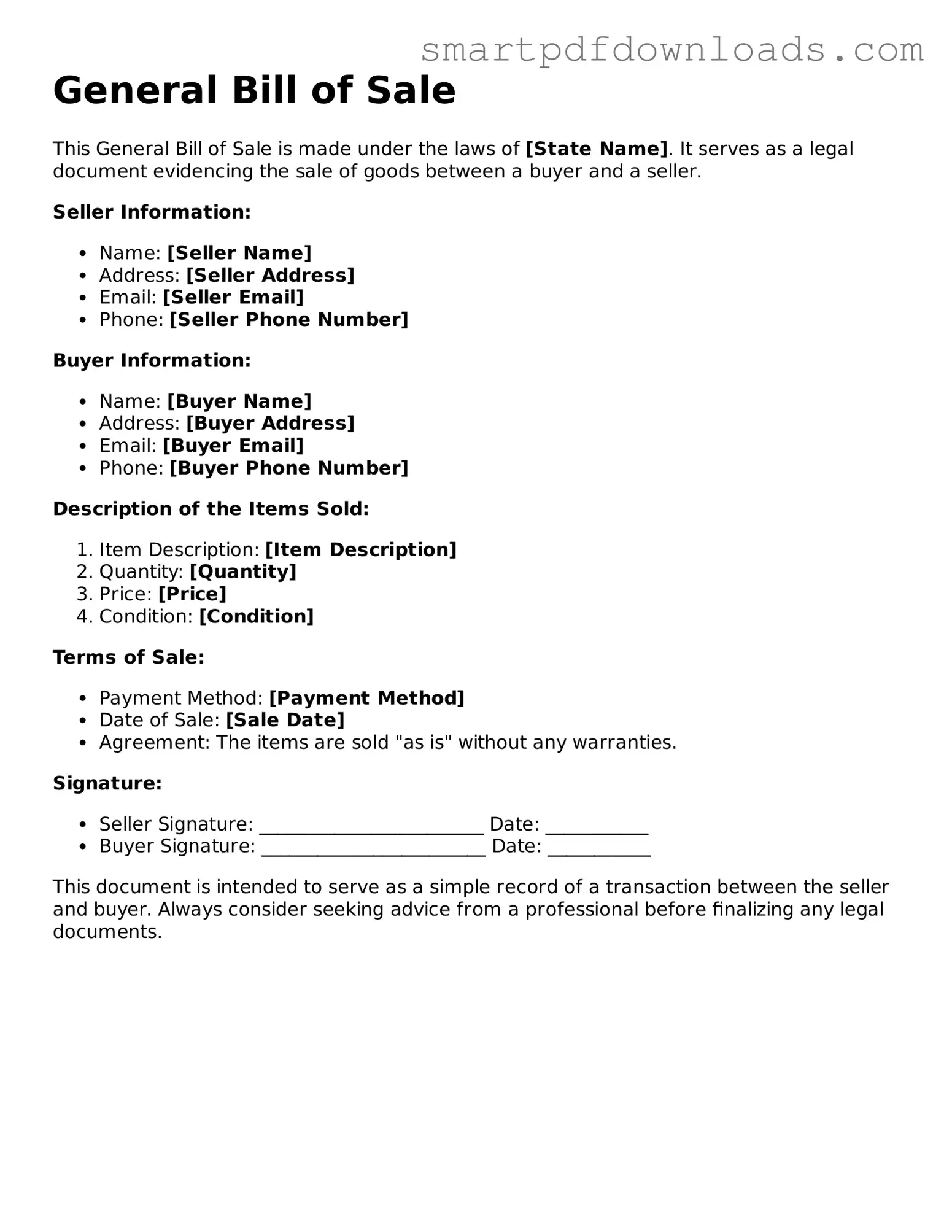Free General Bill of Sale Form
A General Bill of Sale is a legal document that serves as a record of the transfer of ownership of personal property from one individual to another. This form outlines essential details about the transaction, including the description of the item, the purchase price, and the parties involved. By providing a clear and concise account of the sale, the General Bill of Sale protects both the buyer and the seller in the event of future disputes.
Edit General Bill of Sale Online
